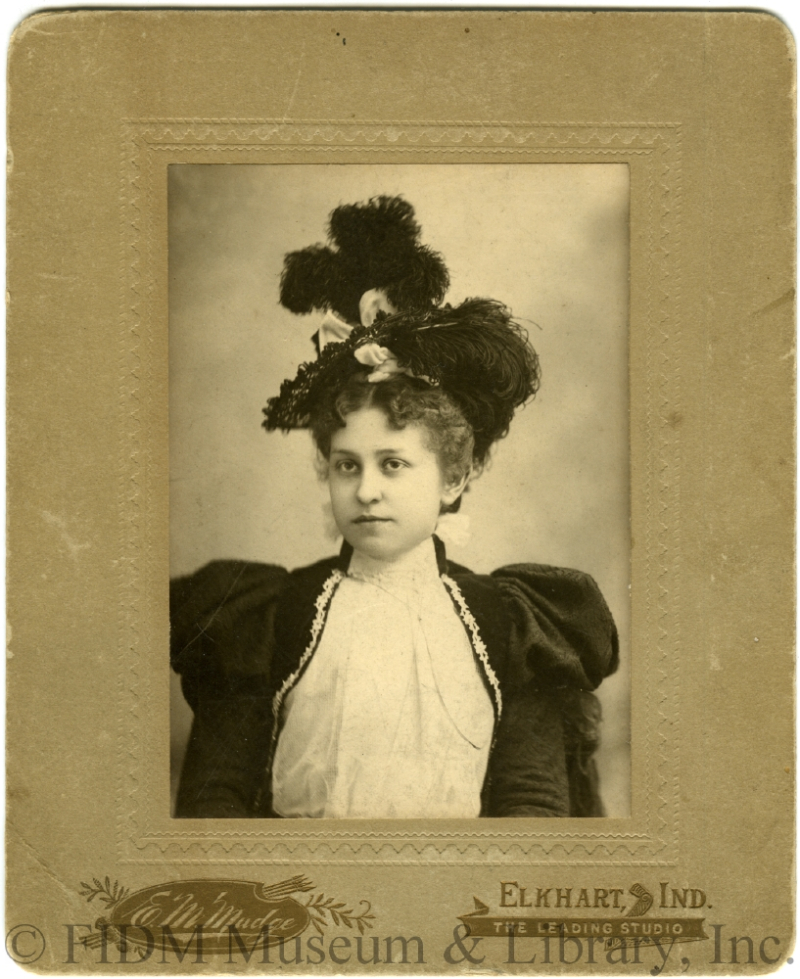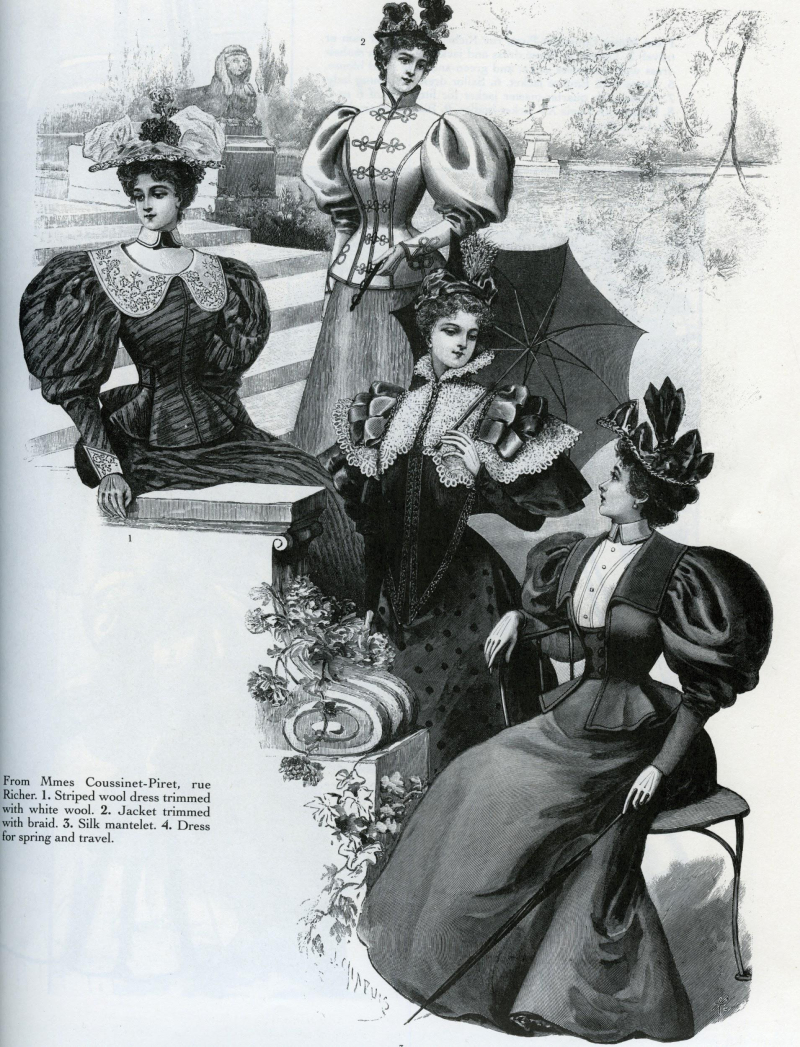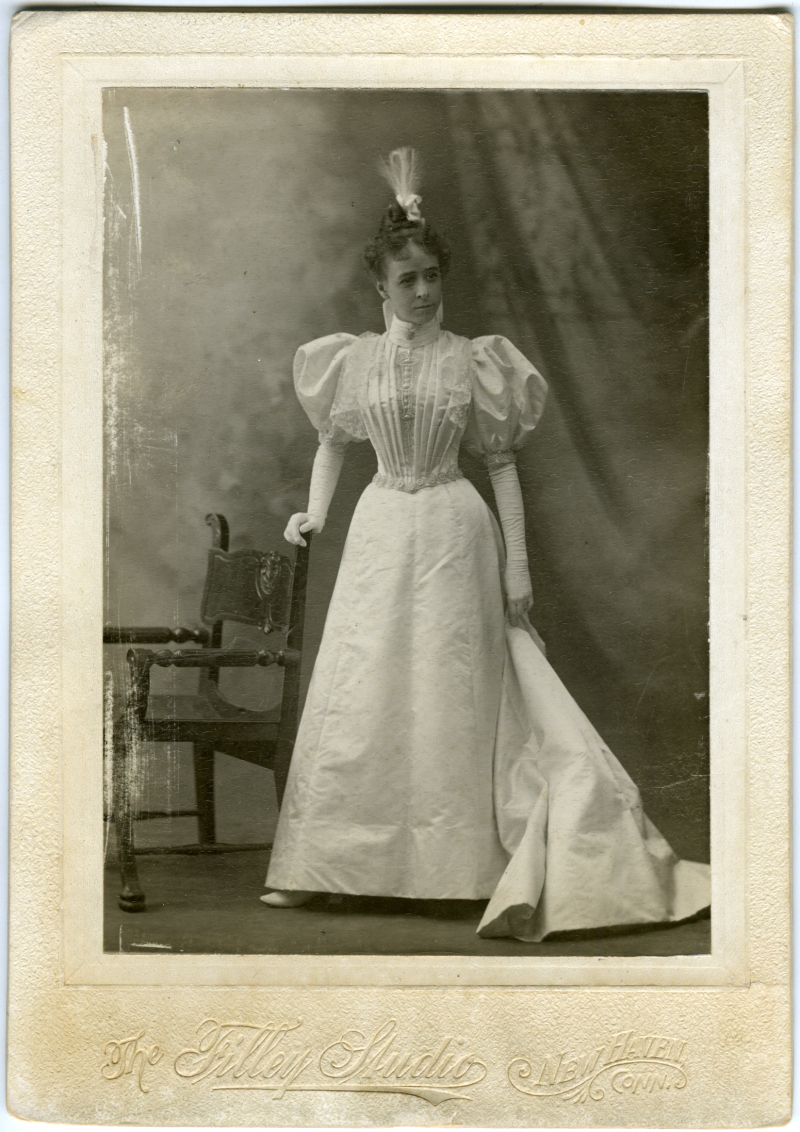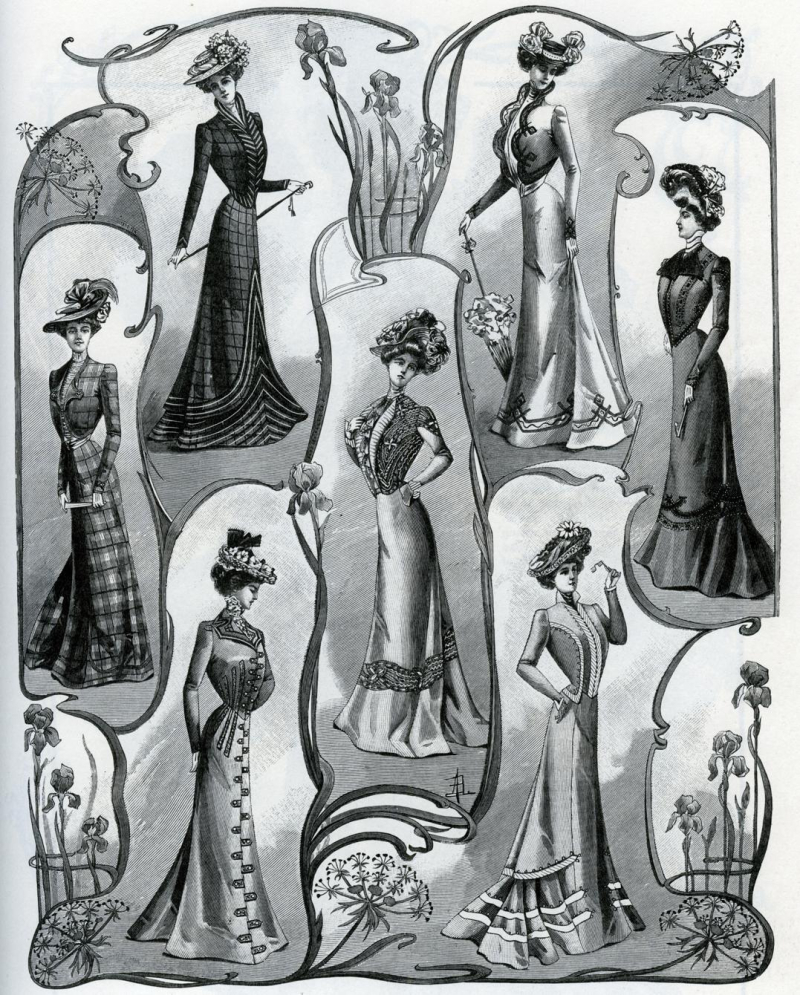Intern Report: Historic Photography Collection
We are so proud of our growing Special Collections objects here at the FIDM Museum. Thanks to Associate Curator Christina Johnson's dedicated interest in historic photography, we have had the opportunity to amass a significant collection of photographs that teach us about the cultural context of fashion (you can read Christina's previous posts about historic photography on the blog here, here, and here).
We were lucky to have archivist-in-training Marissa Maggs interning with us over the past few months; Marissa helped us catalog this important collection in our database, and created an organized and systematic method of storage. Eventually, all of these records will be shared on our Online Collections Database for researchers and the public to learn from.
Marissa is currently a graduate student at UCLA pursuing her Master of Library and Information Studies (MLIS) who has a special interest in fashion, history, and photography. Read on to hear what she discovered about dating photographs through fashion below!
*************************************************************************************************************
The FIDM Museum Special Collections include a large number of historic photographs, and I was lucky enough to spend several months cataloging them. This project combined two of my personal interests, fashion history and historic photographs, with my studies in Library and Information Science at UCLA. The process of cataloguing in this instance consisted of creating metadata for the items, including date, description, size, and donation information.
The photography in the Special Collections ranges from about 1845 through 1920, and includes tintypes, daguerreotypes, ambrotypes, cabinet cards, carte de visites, and snapshot photographs. To the casual viewer, it may seems that women’s clothing from the 19th century is all voluminous skirts and sleeves with tiny, corseted waists, but Victorians followed trends as much as we do today. Under the tutelage of Associate Curator Christina Johnson, I gained a better eye and understanding for identifying these fads and used them to help date the photographs.
One of the most striking fads is the enormous sleeves that became popular from 1893-1896. Often referred to as “leg o’ mutton” or “gigot” sleeves, the shoulder was exaggerated and puffed to an extreme size.
 Cabinet card, 1898
Cabinet card, 1898
FIDM Museum Special Collections
Gift of Steven Porterfield
SC2012.897.20
Photographs depicting these distinct sleeves made dating easier than those showing more subtle fads. Christina and I would date the photographs using books of fashion plates from the time period, including Victorian and Edwardian Fashions from ‘La Mode Illustree.’ It was often easy to directly trace the fads seen in the plates to those in the photographs, which is interesting to compare to modern times, when there are such varied styles of clothes manufactured, often referencing “vintage” style.
 “1896.” Victorian and Edwardian Fashions from “La Mode Illustree.” Edited by JoAnne Olian, Toronto, Canada: Dover Publications, 1998.
“1896.” Victorian and Edwardian Fashions from “La Mode Illustree.” Edited by JoAnne Olian, Toronto, Canada: Dover Publications, 1998.
 Cabinet card, 1897
Cabinet card, 1897
FIDM Museum Special Collections
Gift of Steven Porterfield
SC2012.897.69
The late 19th and early 20th century were a time of increasing social change for Western women. As part of the first wave of feminism, both the Gibson Girl and the New Woman emerged. The Gibson Girl was strong, healthy, and athletic, but perhaps most famously created a new ideal body type for women: tall and slim, but with a larger bust and hips. [2] The New Woman was less aesthetically-based, and represented women who were increasingly independent: autonomous, college-educated, professional, and opinionated. [3] If a Gibson girl was slim in the middle with exaggerations at the upper and lower halves of the body, the gigot sleeve fit the bill. If the New Women was increasingly assertive, the gigot sleeve was too large to be ignored.
Although the Gibson and New Woman archetypes would continue into to the 20th century, the gigot sleeve fad disappeared within only a few years, and the preferred body type shifted to the S-curve, where the chest was pushed forward and the rear pushed backwards. The looseness and fullness of clothing at the bosom was often termed “pigeon breast,” for its visual similarity to the bird.
 “1901” Victorian and Edwardian Fashions from “La Mode Illustree” Edited by JoAnne Olian, Toronto, Canada: Dover Publications, 1998.
“1901” Victorian and Edwardian Fashions from “La Mode Illustree” Edited by JoAnne Olian, Toronto, Canada: Dover Publications, 1998.
The leg o’ mutton sleeve is just one of several interesting fads exhibited in the special collections photographs. Working with this photos has been an exciting way to get a brief glimpse into the lives of people who lived more than 100 years ago. I feel a sense of accomplishment knowing that I am helping to make these photos and the visual information they hold more accessible.
[1] Gigot,” Merriam-Webster, accessed December 12, 2016 https://www.merriam-webster.com/dictionary/gigot
[2] Anne Bolin, “Vandalized Vanity: Feminine Physiques Betrayed and Portrayed,” in Tattoo, Torture, Mutilation and Adornment: The Denaturalization of the Body in Culture and Text, eds. Francis E. Mascia-Lees and Patricia Sharpe (Albany, NY: State University of New York Press, 1992), 85.
[3] Martha H. Patterson, Beyond the Gibson Girl: Reimagining the American New Woman, 1895-1915 (Champaign, IL: University of Illinois Press, 2005).